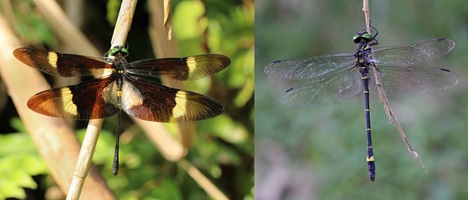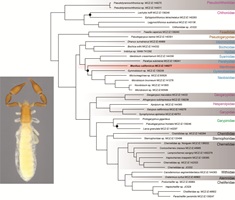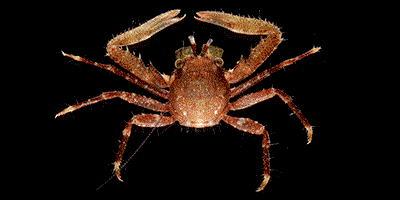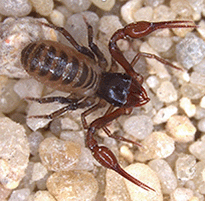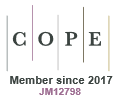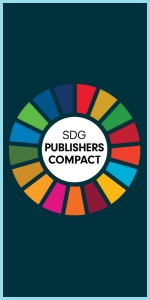Phylogenetic analysis of Chlorogomphidae, using both nuclear and mitochondrial markers, revealed that the family is best treated as containing a single genus, Chlorogomphus. Chlorogomphus montanus is synonymised to Chlorogomphus nasutus, and Chlorogomphus urolobatus is synonymised to Chlorogomphus infuscatus. The previous synonymy of Chlorogomphus suzukii and Chlorogomphus tunti is confirmed. Other potential synonyms are discussed, including C. nasutus, which actually refers to two (not three) species – herein considered as C. nasutus and C. satoi – leaving the genus with 56 species. (Image credit: left, Tom Kompier; right, Fang-Shuo Hu.)
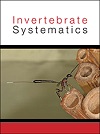
Invertebrate Systematics
Volume 39 Number 9 2025
Pseudoscorpions are an ancient arachnid group with a fossil record that extends to the Devonian, with all modern families having likely evolved during the Mesozoic. One of the rarest pseudoscorpion families, Menthidae, is sporadically distributed around the world, and ever since its description has been included in the superfamily Garypoidea. Based on new Sanger sequencing and phylotranscriptomic data, Menthidae are inferred to be a member of the superfamily Neobisioidea, and the sister-group to a clade that includes Gymnobisiidae, Neobisiidae and some Syarinidae. (Image credit: Mark Harvey.)
IS24087 Abstract | IS24087 Full Text | IS24087PDF (2.9 MB) | IS24087Supplementary Material (357 KB) Open Access Article
The Mediterranean Sea region, despite being well-studied, still harbors many biodiversity mysteries. This study focuses on the complex taxonomic history and longstanding identification challenges of East Atlantic-Mediterranean porcelain crabs (Pisidia). Using genetic, morphological, and 3-D imaging techniques, we identify five distinct Pisidia species-lineages, each uniquely defined by molecular and morphological traits. Our findings reveal that major evolutionary events, shaped by past climatic and geographic changes, influenced the diversification of Pisidia, offering new insights into its biodiversity and taxonomy. (Photograph by Zdeněk Ďuriš.)
South-west Australia is a biodiversity hotspot with a largely endemic fauna of invertebrates. Many of these invertebrates inhabit mesic refugia across the landscape, and their identification is important for biodiversity conservation. Here we describe a new genus of pseudoscorpions that has speciated extensively in refugia across south-western Australia and recognise 12 new species with often narrow distribution ranges. Our study is an important contribution to understanding endemism and identifying areas of high conservation relevance in an Australian biodiversity hotspot. (Image credit: Danilo Harms.)



